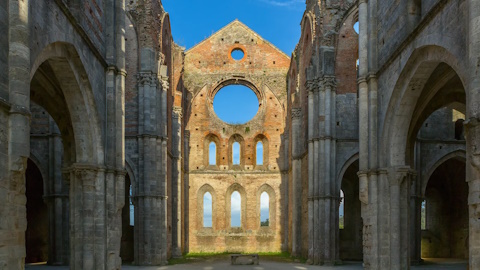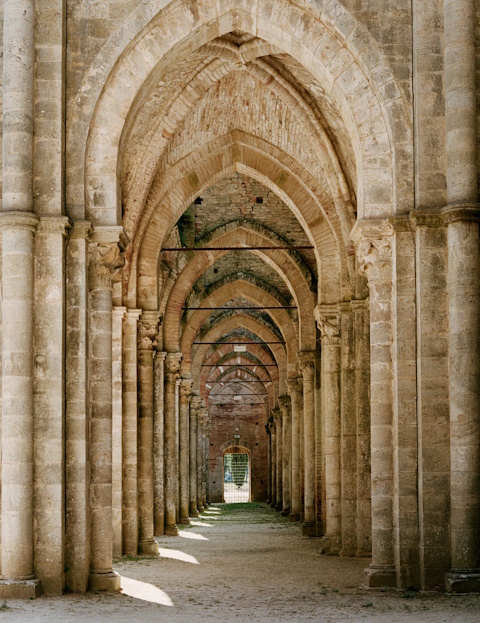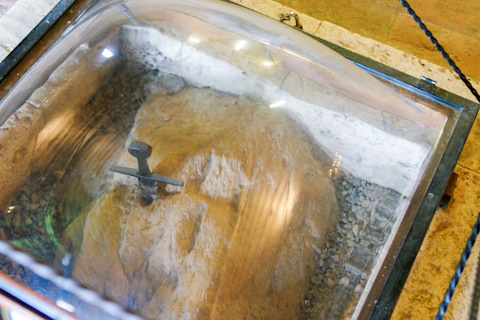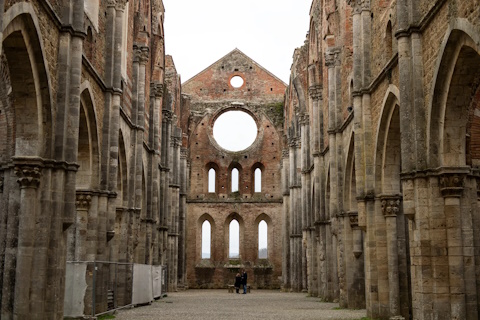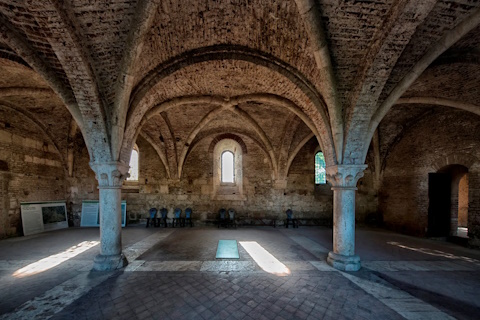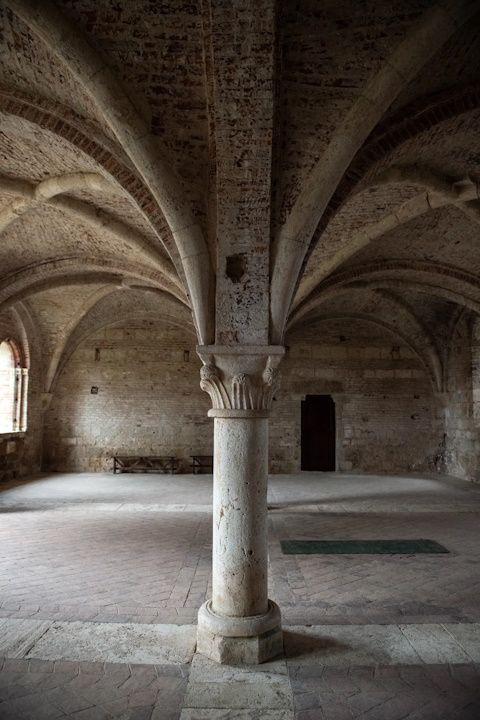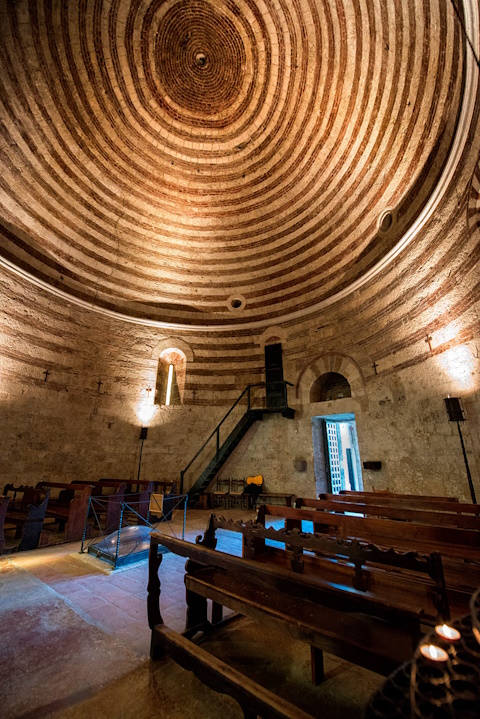Abruzzo
Abruzzo is a region in central Italy, located east of Rome, between the majestic peaks of the Apennines and the crystal-clear waters of the Adriatic Sea. Much of its territory is covered by national parks and nature reserves, making it one of the greenest areas in Europe. The inland area is dotted with medieval and Renaissance villages, perched on scenic hills and steeped in a timeless atmosphere.
The regional capital, L’Aquila, is a historic walled city, deeply marked by the 2009 earthquake, yet still rich in charm and tradition.
Along the coast lies the evocative Costa dei Trabocchi, famous for its sandy coves and the characteristic trabocchi — ancient wooden fishing structures suspended over the sea.
Abruzzo is an authentic land, where nature, history, and culture merge in a unique harmony.
Basilicata
Nestled between the Tyrrhenian and Ionian seas, Basilicata is a hidden gem in southern Italy. Known for its dramatic landscapes, ancient hilltop towns, and rich history, it offers a unique blend of nature and culture. Highlights include the stunning cave dwellings of Matera (a UNESCO World Heritage Site) and the untouched beauty of the Lucanian Dolomites. Basilicata is a land of authenticity, tradition, and quiet charm—perfect for travelers seeking Italy off the beaten path.
Calabria
Located in the southwestern tip of Italy, Calabria forms the "toe" of the Italian boot. It's a sun-drenched region known for its rugged mountains, charming ancient villages, and stunning coastline dotted with famous beaches. The largest city, Reggio Calabria, is home to the National Archaeological Museum and the Riace Bronzes — two iconic 5th-century BC Greek warrior statues.
Campania
Campania is a region in southwestern Italy, known for its ancient ruins and stunning coastline. Its capital, Naples, lies between the famous Mount Vesuvius and the deep blue Bay of Naples. To the south stretches the Amalfi Coast, renowned for its picturesque cliffside towns such as Positano, Amalfi, and Ravello, where natural beauty meets rich history.
The region is also crossed by the Volturno River—the longest river in southern Italy. Its valley is one of Campania’s most scenic and lesser-known areas, with green hills, ancient villages, and quiet rural landscapes. Particularly striking is the area near the Castle of Castel Volturno, where the river forms a scenic bend before flowing into the Tyrrhenian Sea.
Emilia-Romagna
Emilia-Romagna is a region in northern Italy that stretches from the Apennines to the Po River. Famous for its renowned cuisine, art cities, and Adriatic beaches, it offers a unique blend of culture and tradition. The capital, Bologna, is known for its ancient university and historic porticoes. Other cities, such as Ravenna with its magnificent Byzantine mosaics, make the region a fascinating destination for lovers of history and good food.
Friuli-Venezia Giulia
Friuli-Venezia Giulia is a region in northeastern Italy, rich in history, culture, and diverse landscapes. Overlooking the Adriatic Sea and bordering Austria and Slovenia, it blends Latin, Slavic, and Germanic influences. From the Dolomites to the vine-covered hills famous for their white wines, it offers both natural beauty and culinary delights. Trieste, the regional capital, retains the Central European charm of the former Austro-Hungarian Empire, with landmarks such as Piazza dell’Unità d’Italia and the seaside Miramare Castle.
Lazio
Lazio is a region in central Italy that combines centuries of history, picturesque landscapes, and cultural heritage. Its main city is Rome, the capital of the country and once the center of a vast empire.
Here you can find many historical sites: from the ancient city of Ostia Antica to small villages hidden among hills, lakes, and the Apennines. The region is washed by the Tyrrhenian Sea and amazes with its natural diversity and rich traditions.
The Colosseum — one of the most iconic symbols of Rome — is located here. But it's important to remember: this is not just a tourist attraction, but a former arena where gladiator fights and public executions took place. Today, it is a cultural heritage site, but its history is also a reminder of the cruelty of the spectacles that once entertained the masses.
Liguria
Liguria is a beautiful crescent-shaped region located in northwestern Italy, washed by the azure waters of the Mediterranean Sea. Its coastline, world-famous as the Ligurian Riviera, offers breathtaking views and a unique atmosphere, divided into two charming parts: the Riviera di Levante and the Riviera di Ponente.
On the Riviera di Levante lie the picturesque and colorful fishing villages of the Cinque Terre—true gems nestled between the sea and cliffs, perfect for those seeking unspoiled nature and authentic traditions. This area also includes the elegant resorts of Portofino and Santa Margherita Ligure, attracting refined tourists with their scenic harbors, exclusive boutiques, and high-end restaurants.
To the west, the Riviera di Ponente features towns with historical charm such as Sanremo, famous for its renowned Italian Song Festival, an early 20th-century casino, and a flower-lined promenade with palm trees that create a soft and relaxing Mediterranean atmosphere.
Thus, Ligu
Lombardy
Lombardy, located in the heart of northern Italy, is one of the country’s most dynamic and wealthiest regions. Its capital, Milan, is a true global hub for fashion, design, and finance, featuring elegant neighborhoods, high-end boutiques, and one of Europe’s most refined culinary scenes. Milan’s historic center is dotted with prominent monuments, such as the famous Gothic-style Duomo—one of the largest cathedrals in the world—and the church of Santa Maria delle Grazie, home to Leonardo da Vinci’s iconic fresco, The Last Supper, a symbol of a rich artistic and cultural heritage. Moving northward, Lombardy offers breathtaking landscapes, including the picturesque Lake Como, a renowned pre-Alpine destination famous for its historic villas, lush gardens, and crystal-clear waters reflecting the surrounding mountains. This combination of modernity, art, and nature makes Lombardy a unique and captivating region, attracting visitors from all over the world.
Marche
Marche is a region in central Italy facing the Adriatic Sea, nestled between the Apennine Mountains and the coast. Its capital, Ancona, is a lively port city located along the spectacular Conero Riviera, known for its beaches, white cliffs, and medieval villages. Among its main cities is also Pesaro, the birthplace of composer Gioachino Rossini. Inland, the landscape becomes wilder, with historic fortresses perched on hills and breathtaking natural scenery such as that of the Monti Sibillini National Park. Le Marche offers a rare balance of art, nature, and authentic traditions.
Molise
Molise is a small but charming region in central-southern Italy, featuring mountainous landscapes and a short coastline on the Adriatic Sea. It includes part of the Abruzzo National Park, home to wildlife and scenic trails. The regional capital, Campobasso, is famous for Monforte Castle and Romanesque churches. Among its historical treasures is Pietrabbondante, with an ancient theater and a Samnite temple, evidence of the ancient Italic civilization.
Piedmont
Piedmont is an Italian region located at the foot of the majestic Alps, bordering France and Switzerland. It is renowned for its refined cuisine and outstanding wines, such as the famous Barolo. The regional capital, Turin, is a city rich in history and art, known for its beautiful examples of Baroque architecture and the city's symbol — the famous Mole Antonelliana with its impressive spire. Turin also hosts important museums, including the Automobile Museum, which tells the story of the city's leading industry, and the Egyptian Museum — one of the largest in the world with its remarkable archaeological and anthropological collection. Piedmont is a region that captivates with its culture, artistic heritage, and gastronomic masterpieces.
Apulia
Apulia, located in the heart of southern Italy, represents the picturesque "heel" of the Italian boot. This region enchants with its charming hilltop villages, where houses with characteristic white plaster harmoniously blend with ancient and authentic rural landscapes. With hundreds of kilometers of coastline washed by the Mediterranean Sea, Apulia offers delightful beaches and a Mediterranean climate, perfect for lovers of the sea and nature.
The regional capital, Bari, is a lively port and cultural center known for its youthful energy and university life, while Lecce, nicknamed the "Florence of the South," amazes with its splendid Baroque architecture, rich in elegant and refined details. Among the most unique attractions of the region are Alberobello and the Itria Valley, famous for their trulli — traditional stone buildings with conical roofs, true symbols of Apulia's history and culture.
Apulia is a place where traditions, history, and natural landscapes intertwine, offering un
Sardinia
Sardinia is one of Italy’s most captivating islands, located in the heart of the Mediterranean Sea. With around 2,000 kilometers of coastline, the island offers an incredible natural heritage made up of sandy beaches, crystal-clear waters, and hidden coves—perfect for both relaxation and sea adventures.
Inland, the scenery changes dramatically: the mountainous landscape is crossed by hiking trails winding through forests, plateaus, and wild valleys, offering breathtaking views and a deep connection with unspoiled nature.
One of the most fascinating aspects of Sardinia is its ancient history. The island is dotted with nuraghi—mysterious stone towers built during the Bronze Age. Among them stands out the Su Nuraxi of Barumini, one of the largest and best-preserved archaeological sites, recognized as a UNESCO World Heritage Site. Built around 1500 BC, it is a key testament to the Nuragic civilization.
With its blend of nature, culture, and ancient traditions, Sardinia is a unique desti
Sicily
Sicily is one of Italy’s most precious gems, an island that holds millennia of history, culture, and natural beauty. Located in the heart of the Mediterranean Sea, it is the country’s largest region and captivates everyone with its contrasts: crystal-clear seas and rugged mountains, active volcanoes and ancient temples, vibrant cities and villages suspended in time.
Ruled over the centuries by Greeks, Romans, Arabs, Normans, and Spaniards, Sicily is a unique mosaic of civilizations. Traces of these cultures intertwine in cities like Palermo, Syracuse, Agrigento, and Catania, where baroque churches stand next to colorful markets and ancient ruins.
Tuscany
Tuscany, in the heart of central Italy, is a land of art, history, and breathtaking landscapes. Florence, its capital, houses Renaissance masterpieces such as Michelangelo's David and the Uffizi Gallery. Among gentle hills dotted with vineyards, medieval villages, and beaches overlooking the Tyrrhenian Sea, Tuscany enchants with its timeless beauty.
Trentino-Alto Adige
Trentino-Alto Adige is a splendid region in northern Italy, nestled between the majestic Alps and bordering Switzerland and Austria. This borderland is a fascinating blend of Italian and German cultures, reflected in its traditions, language, and architecture. The landscape is dominated by the Dolomites, a UNESCO World Heritage site, famous for their spectacular sharp limestone peaks that at sunset turn pink and orange, offering scenes of incomparable beauty. Among forests, valleys, and crystal-clear lakes, the region offers an ideal environment for hikers, skiers, and nature lovers. The area is rich in history and culture: medieval castles such as Castel Tirolo, the symbol of the region, Castel Roncolo, famous for its Renaissance frescoes, and Castel d'Appiano, testify to a past of noble families and ancient battles.
Umbria
Umbria - the green heart of Italy. It is a land of medieval hilltop villages and quiet forests, of fragrant truffles and fine wines. Here, far from the crowded routes, every corner preserves the history of art, nature, and ancient traditions. Umbria reveals itself to those who seek the authentic soul of Italy — simple, warm, and timeless.
Valle d’Aosta
Valle d’Aosta, nestled among the majestic Western Alps, is the smallest region in Italy but boasts extraordinary natural and historical heritage. This land, located in the heart of the mountains on the border with France and Switzerland, is a true paradise for nature lovers and winter sports enthusiasts. Its landscapes are dominated by Europe’s highest peaks: Mont Blanc, the tallest point on the continent; the Matterhorn with its iconic shape; Monte Rosa; and Gran Paradiso, the only national park in Italy entirely within the region.
Veneto
Veneto is one of the most precious gems of northeastern Italy, a region that enchants with its extraordinary variety of landscapes, history, and culture. From majestic Dolomite peaks, a UNESCO natural heritage site, to the tranquil waters of the Adriatic Sea, Veneto offers a panorama ranging from snow-capped mountains to picturesque coastlines. At the heart of this land lies Venice, its unique capital, famous for its romantic canals, elegant bridges, and architecture blending Gothic, Renaissance, and Baroque styles. The city is a true open-air museum, also renowned for its historic carnival, a celebration of masks, colors, and centuries-old traditions that every year attracts visitors from all over the world.
Real Estate
In this section, you will find a selection of properties for sale in Italy, including independent houses, apartments, seaside villas, and countryside estates. Each listing contains detailed information: size, location, price, and main features. Perfect for those looking for a second home, an investment, or a permanent residence. Browse through all the updated listings and find the right property for you.

